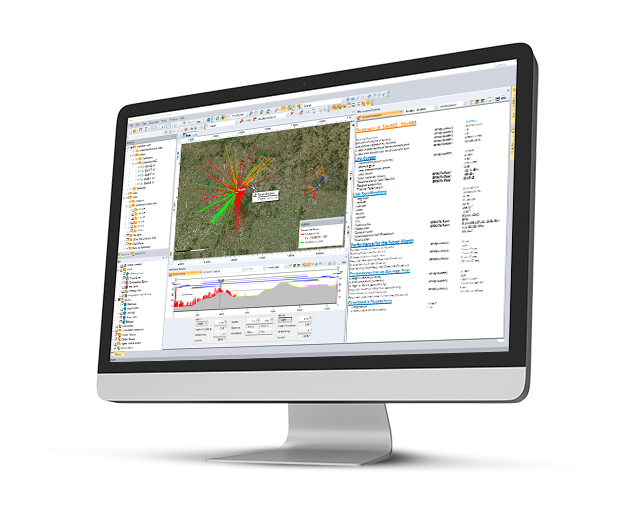As 5G makes RAN planning more complex, mobile operators need advanced RAN planning and optimisation tools. Atoll Microwave is a state-of-the-art point-to-point and point-to-multipoint backhaul planning and optimisation software. It allows designing and planning large microwave link networks as required for 5G deployments, according to ITU recommendations, industry standards, and operator guidelines.


Atoll Microwave Powerful Link Planning Tool
Atoll Microwave is based on the leading Atoll software platform which includes a high-performance GIS and advanced data and user management features. It provides mobile operators with a comprehensive framework for the design and planning of point to point and/or point-to-multipoint microwave links and transmission backhaul.
Full integration of Atoll Microwave with Atoll radio planning modules allows immediate sharing of radio planning and optimisation data for backhaul planning. Atoll microwave also takes advantage of the Atoll platform GIS, user and data management, and reporting features.
Atoll Microwave is being used by a number of major wireless operators and equipment vendors worldwide.
Atoll Microwave also includes a Backhaul Capacity Planning module that allows mobile network operators (MNOs) to model backhaul network topologies and to dimension backhaul links according to the mobile network traffic. The Backhaul Capacity Planning module enables the analysis of end-to-end mobile traffic routing and the optimisation of backhaul capacity. Atoll Microwave also supports non-line-of-sight backhaul enabling small cell planning and 5G network design activities.
Point-to-Point and Point-to-Multipoint Link Modelling
- Support of point-to-point and point-to-multipoint links
- Modelling of LoS/nLoS/NLoS links using radio, microwave, and mm-wave frequencies as well as wired transmission technologies (optical, copper links etc.)
- Support of ITU standard and user-defined frequency bands, high-low configurations, and channelisation plans
- Microwave radio and equipment modelling: vendor parameters, IRF, signatures, etc.
- Antenna modelling: vendor parameters including co- and cross-polarisation, radomes, etc.
- Support for repeaters
- Support for space and frequency diversity
- Support for dual polarisation
- Support for ATPC
- Support for adaptive modulation
- Support for V-Band and E-Band links
Microwave Link Design
- LoS visibility plots
- NLoS coverage plots and multipath analysis
- Path profile analysis including Fresnel zone clearance with multiple K factors
- Off-path profile analysis of Fresnel zone clearance on the horizontal plane
- Propagation and link budget analysis
- Automatic antenna height optimisation
- Reflection point analysis and repeater design
- Link network design rules for best frequency band assignment
- Link design assistant to solve planning issues
Link Quality and Availability Objectives
- Performance objectives based on ITU G-821, G-826, and G-828 recommendations
- Performance objectives for IP links based on ITU-T Y.1541 recommendation
- User-defined performance objectives and parameters
Link Performance
- Based on ITU-R P.530 recommendations “Propagation data and prediction methods required for the design of terrestrial line-of-sight systems”
- Support for Crane, Vigants, and K-Q models
- User-defined and ITU standard geoclimatic parameters
- User-definable reports including multipath, rain, and obstruction fading
- User-definable propagation model
- End-to-end multi-hop link analysis
Interference Analysis and Link Frequency Planning
- Based on ITU-R P.452 recommendation for the evaluation of interference
- Detailed interference analysis including interferer ranking
- Interactive automatic channels-to-link allocation
- Analysis of low/high conflicts
- Integration of interference impact into link reliability report
- Evaluation of link quality vs. performance objectives
Point-to-Multipoint Link Design and Planning
- Modelling of Point-to-Multipoint (PMP) hubs and terminals
- Hub coverage predictions
- Hub-terminal connectivity analysis
Backhaul Capacity Planning (option)
- Modelling of backhaul network topologies and traffic routing
- Backhaul network capacity planning and dimensioning
- Failure scenario analysis and audit

